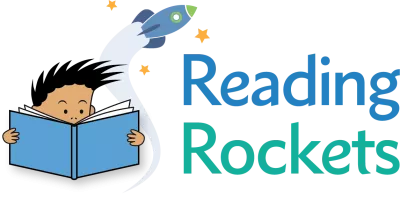The Dreamers Among Us
An estimated 9,000 Dreamers are U.S. educators
By Mary Ellen Flannery
Last fall, President Donald Trump announced an end to DACA, the federal Deferred Action for Childhood Arrivals program, which has protected from deportation about 800,000 young people who were brought to the U.S. as children. We know they include hundreds of thousands of our students, but the Dreamers also include an estimated 9,000 teachers and education support professionals, who have poured their hearts into education. They fear for their futures, and their students.
LUIS JUAREZ: “I didn’t know any English when I came here. I was a full Spanish learner. It was teachers who truly made an effort to stay after school with me, to stay and talk, to help me be the best, not only academically but personally, too. It made a huge impact on the way I saw education and educators. At UT [University of Texas] Austin, I was full-on in the bilingual education program, and I went to a job fair my senior year. I had planned to stay in Austin—I loved it there—but I went over to the Dallas ISD [Independent School District] table and I saw a very familiar face. I go up to her, she looks up at me, because she’s like five feet tall and I’m six, and she immediately recognizes me! This was the first teacher I had here in Texas, and now she’s a principal looking to hire bilingual teachers. So I ended up coming back to Dallas to work with her. It’s been a phenomenal experience. I teach fifth-grade math and science. I’m a bilingual teacher, so a lot of these students, they’re growing up just like I grew up in immigrant households. My immigrant background shapes my pedagogy. I’ve lived that story, and I continue to live it. When I was growing up, I remember when my teachers would give us homework and say, ‘Ask your parents if you have questions.’ Well, my dad went to school through third grade. This year, I’m hosting a series of science workshops for parents, where they come in, before each unit starts, and I teach them everything the students will learn. I do the experiments with the parents. The parents love coming here and learning. I’m a servant. Teachers are servants. It’s about serving our students and families.”
KAREN REYES: “In high school, my friends started applying to colleges. There was one day, in our senior year, where everybody in my government class was required to apply to community college. I was terrified. I thought everybody would find out, I was thinking ‘I don’t have a Social Security number, I can’t go on the website.’ I went to my counselor and she was like, ‘I don’t know what you should do. Here’s a slip to miss class.’ But then she came back to me a week later to say, ‘Guess what? You can go to college in the state of Texas.’ It was such a relief. I went to UT San Antonio for undergrad and graduated in 2011, right before [former President Barack] Obama implemented DACA. Before DACA, I couldn’t teach. But I could volunteer, and I did. I volunteered everywhere—reading initiatives, Communities in Schools programs. At the same time, I applied for a master’s degree in deaf education and got accepted. DACA came at the perfect time. I finished grad school in 2014, and I’m going into my fourth year of teaching 3- and 4-year-olds who are deaf or hard of hearing. I love it! I get to help students who have zero language, or very limited language, connect with the world. We just throw so many activities and experiences at them. Last year, I had this one student who came into my classroom with two words. Toward the end of the year, he was looking over my shoulder at a photograph and he said, ‘Oh Reyes, who that? That Julian’s mommy? I like her!’ It was amazing! These past few weeks have been an emotional time. But I’m a teacher, and all I want to do is teach and help my kids.”
JORGE RESENDEZ: “I’m in my fourth year teaching—I teach ninth-grade social studies in Colorado. I heard so many stories when I was in college about undocumented young folks who graduated and couldn’t find careers. Fortunately for me, I graduated and was able to do something I’m passionate about, which is education. When the announcement was made about ending DACA, many of my students joined me in walking out of school in protest. It was a really proud moment for me—to see my students standing up for their peers, and for me. We also had a whole class conversation, in all of my classes, about it, and we talked about how it might affect people, and how it might put more people at risk of deportation. And I told them, ‘You know what? The one thing we can do is voice our concerns. Voice them by joining protests. Voice them by writing to Congress, by talking to our legislators.’ I know, from personal experience with the California Dream Act, that we can organize and we can successfully press for change. We have to push.”
HUGO ARREOLA: “In high school, I won an academic college scholarship, but when I couldn’t supply a Social Security number I couldn’t get it. Instead I ended up working after graduation with my dad—he does flooring and carpeting work. In Arizona, we have Prop 300 [which requires in-state Dreamers to pay out-of-state tuition rates], so my first class cost about $1,200. I would go to school for one semester, then take off the next one to work and save. After six years, I’m finishing my associate’s degree in computer information systems this December. For the past three years, I also have been working at Metro Tech High School in Phoenix, currently as a campus lab technician. The majority of my time is spent figuring out why some computers are failing, and then fixing them. It’s a daily reminder of how much technology plays a role in classrooms every day. But my passion is advocacy and outreach—I feel like there’s a million things that people can do as far as helping students, or helping educators, when it comes to social justice. There’s so much work to be done, and I want to be a part of it. Here at Metro, we have about 2,000 students, of which about 200 are DACA recipients. They all know how to reach me.”
For more dreamers visit: edvotes.com/neaedjustice/dreamers
Teacher Blends Art and Pride to Create a Recipe for Great Teaching
Educator creates customized books to teach Florida students about art.
By Aliya Drake
“I want my students to be proud of who they are and where they came from. That’s primary to me,” says Rebecca Hinson, an art teacher at South Grade Elementary in Lake Worth, Fla. Aside from raising a child, the educator says that being able to create art books depicting her students’ cultures has been one of her life’s biggest adventures.
“Art can be a good catalyst for teaching,” Hinson says. “It is a powerful resource for getting students talking, thinking, and reading with a deeper understanding of the text.”
Hinson is the author of 36 art books featuring cultures that are formed by and reflect people of color through their authentic art pieces. By creating these art books she crafted new learning material that she wasn’t able to find in any existing K–12 textbooks.
At first, Hinson taught European art to children of European ancestry at Plantation Key School in the Florida Keys. Later, she moved to South Grade
Elementary School where 80 percent of her students are English language learners. Hinson changed her classroom after realizing her knowledge of European art wouldn’t connect with her new students, and after she heard a colleague talk about being “ashamed of who she was, and where she came from” after arriving in the U.S. from Nicaragua.
“I thought, ‘I can’t let that happen to my students. What can I do? Well, I’m an art teacher. I’m going to teach my students about the art of their cultures,’” Hinson says, looking back.
For years, she had a student, Tomas Juan, who never spoke, never smiled, and avoided direct eye contact. Following a lesson about Tecún Umán, the Mayan prince who fought against the Spanish conquistadors, Hinson heard Juan speak for the first time.
“Thank you,” he said, looking directly into her eyes.
“Of all the things that I had tried, it was his own culture which spoke to his heart,” Hinson says.
“At that point I realized how powerful art was and felt that it should be shared because art reveals the soul of a nation.”
Today, Hinson is the author of six series of books—each containing six titles. The collection allows her to make a difference in her students lives, and show them that their culture is important, too. And by presenting the stories first, then using text-dependent questions to get students to better comprehend the information, Hinson is able to deepen their understanding of the artwork they’re viewing.
Hinson says, “Connecting them with the art and history of their culture made them proud of who they are and where they came from.”
Other educators use these art books in their classrooms, too.
Hinson plans to add an Art of South America series and an Art of the U.S. series, written in Mandarin, as well. The books are sold and distributed exclusively by Follett School Solutions and can be previewed at rebeccahinsonpublishing.com.



